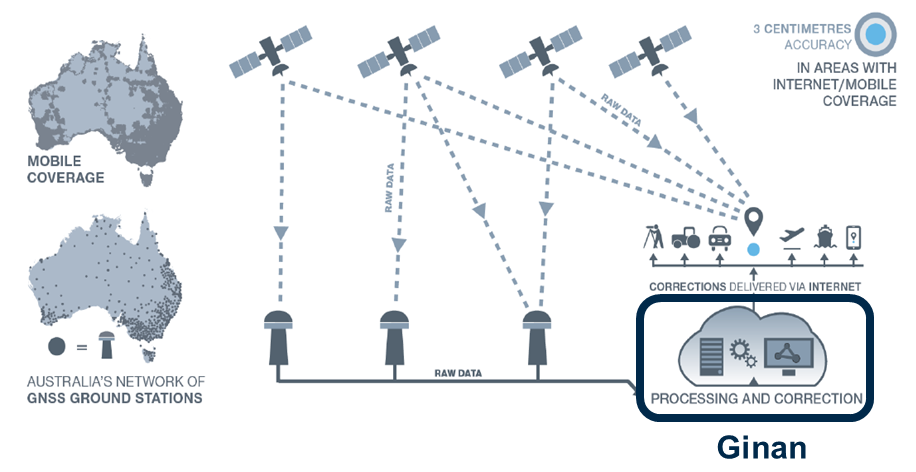News
Ginan to guide the way for Positioning Australia
Published:22 September 2021
Ginan to guide the way for Positioning Australia
A star that aided the First Australians as they navigated across the continent will be the name of new positioning software that has been developed by Geoscience Australia.
Ginan is the first Australian-developed open-source software to provide real-time corrections to positioning signals of all the Global Navigation Satellite System (GNSS) constellations.
This initiative is part of Geoscience Australia’s Positioning Australia program, which is improving the accuracy of location-based data across the nation, bringing it from metres to centimetres.
Geoscience Australia’s National Positioning Infrastructure Branch Head Dr Martine Woolf said the name of the software is a gift from the Wardaman people from the Northern Territory. Geoscience Australia sought permission to use the name Ginan as part of its commitment to respectfully engage and collaborate with Australia’s First Peoples.
“In the language of the Wardaman people, Ginan means ‘a red dilly-bag filled with songs of knowledge’. We like to think of this software as being similar to a dilly-bag full of knowledge because of the benefits it will unlock,” Dr Woolf said.
“Ginan is also the name of the fifth-brightest star in the Southern Cross. Just as the Southern Cross helped the First Australians to navigate this land, the positioning capability we are developing here at Geoscience Australia will enable us to know exactly where we are and where we are going.”
Wardaman Elder, Diganbal Rosas said the dilly-bag was an important part of the Wardaman songline of the Katherine region.
Songlines help to culturally and physically map land and seas through the transmission of traditional knowledge, cultural values, lore and wisdom across the landscapes. They are a living ancient memory code linking the environment, language and culture.
“Ginan [in our language] has all of the Wardaman knowledge regarding connection to country – all of the stars, the skies, the country, the people and the kinship. Everything we do is held in that dilly-bag, in that Ginan,” Ms Rosas said.
“The star teaches us many aspects of that spiritual connection to country, how it all began through those songlines, and how that story connects country to the stars. It is significant [that the Wardaman people have allowed Geoscience Australia to use this name] and I think it is a great opportunity for us to showcase our partnership.”
Dr Woolf said the Ginan software will process multi-constellation GNSS signals such as GPS, providing real-time correction data.
Once operational, Ginan will improve the accuracy of location data from 10 metres down to 3 to 5 centimetres for users with an internet and mobile connection.
This will enable industry to value-add and provide reliable centimetre positioning to their customers.
“Ginan is part of an exciting and innovative Australian Government program to enable precise positioning technology across whole of the Australian continent,” Dr Woolf said.
"It will provide industry with the ability to use precise point positioning, bringing significant economic and social benefits to Australia.”
Examples of how this data could be used include reducing fertiliser and chemical spray waste in agriculture. It could also improve the operational efficiency of large mine sites through greater use of automation.
“Ginan will allow Australians to enjoy the benefits of precise positioning through the creation of new services and products, and in doing so drive Australia’s economic growth,” Dr Woolf said.
“Our precise location data will inform of near real-time atmospheric conditions, which is already being used by the Bureau of Meteorology to assist with their weather predictions.
“It will also enable a greater understanding of movements in the Earth’s crust and provide insight into earthquakes, sea level changes and the atmosphere.”
Ginan 1.0 will be publicly released in June 2022. An alpha version is now available on the Ginan GitHub repository, with a beta version planned for user testing from February 2022.
Further information:
